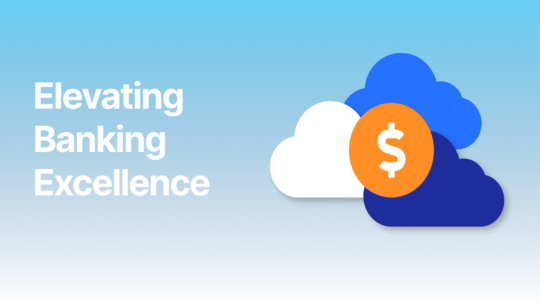Every successful company plans for sustainability and growth. Forecasting the growth path helps companies set their short- and long-term business objectives and make important decisions to help them reach their goals. Short-term forecasts are important in quarterly and annual budget planning and for ensuring that daily business operations help achieve long-term goals. Long-term forecasts help with planning big objectives such as expansion of the company, whether it’s into new markets, new facilities or new geographic regions.
It used to be that companies had to invest a lot of time and manual effort into coming up with somewhat accurate growth forecasts. Anodot has developed a machine learning-based system to do autonomous forecasting of business growth and demand. Anodot’s Autonomous Forecast™ solution automatically manages the sophisticated machine learning required to create, train, tune and deploy a customized forecasting model. Customers experience highly accurate forecasting in a turn-key experience, meaning the solution can be used without needing to have a data scientist forecast the time series metrics. Now organizations can do simple and convenient continuous forecasting based on data that is being generated in real time. This enables quick reaction to changing business conditions to keep the company progress on track.
Early adopters of our Autonomous Forecast solution have found numerous use cases for growth forecasting. Here are just a few of them.
Revenue prediction
The most common use of growth forecasting is for accurately predicting revenue over a year, quarter or perhaps even a month. Every company needs the discipline of revenue forecasting to help develop a budget and ensure that it is not spending more money than it takes in. Moreover, public companies must provide their revenue forecasts to market analysts who use the information to develop investment guidance. Even private companies use revenue projections to encourage investment from venture capitalists, or perhaps to entice acquisition by another company.

Historically, revenue forecasting has been done manually, usually by a data analysis team studying past performance to extrapolate future revenue projections. It’s a tedious process, usually resulting in high-level projections that are infrequently updated—maybe quarterly, at best. Accuracy is often an issue; the forecast must be accurate enough so that it isn’t far off from what is actually going to happen. Arriving at an accurate forecast is a challenge when limited data metrics go into the formulaic process.
As Anodot worked with one of our early adopters on revenue growth forecasting, the customer CFO admitted that when everything is going well and the company is growing and growing, the lack of accuracy in a forecast can be forgiven if revenues overshoot the forecast. The problem is when actual revenues fall short of the forecast, and the company’s budget and spending is based on the higher, incorrect number. Many CFOs have had their career derailed when this happened.
Anodot’s Autonomous Forecast solution provides highly accurate growth projections because the calculations are based on much more data than simply overall historical performance. External factors can be considered as well; for example, when a new competitor enters the market, or when macro-economic conditions change. What’s more, Anodot’s forecasts can be highly granular, getting down to projections for a specific region or for the top 10 or 25 customers.
An ad exchange company replaced its manual forecasting process with Anodot’s Autonomous Forecast. They were able to break their forecast down to multiple dimensions, looking at the revenue projections for the top 100 customers. By looking at what each of these customers would likely produce, the forecasts became much more operational. If a customer showed an expected drop-off, the company could closely plan the management of that account and hopefully reverse the trend toward lower revenue. Having finer granularity forecasts done more frequently creates more opportunity to better manage (and hopefully increase) the revenue streams.
Spending on customer acquisition
For most businesses, there is a cost to acquiring new customers. Known as the customer acquisition cost (CAC), this figure is tied to the cost of marketing, advertising and other promotions the company must run in order to attract new customers. It’s similar to the revenue prediction but here it is even more operational. If a company can forecast its revenue and also how much it is spending on customer acquisition, then its actions on marketing programs can be much more detailed, targeted and effective.
Accurately forecasting CAC depends on taking in historical data of how much a company spent per channel of marketing, such as digital channels (e.g., Facebook ads, Google Ad Words, etc.) as well as traditional channels like radio, TV, print and events. The company would calculate how much it spends on all these channels and how many customers were acquired based on each channel.
Performance metrics from each of these channels help create a more accurate forecast. For example, with Facebook ads, metrics could include how many views the ad had, how many likes, how many comments, how many clicks, etc. Such engagement metrics help forecast how many customers will be acquired through that channel. Anodot’s machine learning algorithms can take in a lot of metrics and determine correlations among them to provide a highly accurate forecast on the cost of customer acquisition.
Customer churn
A cellular service provider wants to forecast the number of customers it can expect to cancel their subscription over the next quarter. This is called customer churn and it happens to all types of businesses that offer subscription-based services. Understanding the potential for loss of customers is critical to knowing how this can impact expected revenue. This knowledge is also important for making decisions that might help retain customers, such as lowering prices or offering more services at the current price level. In most cases, retaining existing customers is more cost-effective than attempting to acquire new customers.
Churn can be forecast not just for overall numbers but also per geography or by different types of customers like family plans. Each churn prediction could lead to different actions that can be taken to try to hold on to customers.
To forecast how much churn the service provider can expect, the company can look at past churn patterns and base its forecast just on that, but this method often falls short and is not very accurate. The results can be much more accurate if the company takes into consideration a number of influencing factors that indicate customers are likely to leave the service.
For example, how many support calls did the company get in the last month? On a daily basis, how many support calls came into the company’s customer service system? If the company observes an uptick in support calls, then it’s likely to see more churn in the coming month. It doesn’t have to be true but the algorithm will figure out, based on historical patterns, if the correlation exists or not.
Anodot’s system can use even more metrics to make the forecast. For example, how many outages in the company’s network occurred in a certain region? Were there performance issues with the network for all or a subset of the subscribers? How many customer complaints showed up in social media? What pricing schemes do competitors offer? Many different metrics can go into the Anodot algorithms as input and the algorithms will figure out if they are relevant or not.
This cellular service provider learned that when training a forecasting model to learn how to forecast, entering information about competitors’ events and marketing campaigns allows the model to learn the effect of competitors on its own amount of churn. For example, last month a competitor launched a big promotion for a family plan. The year before they had some other marketing campaign. The algorithm can learn whether those external activities had an effect on the company’s churn rates. As long as the pattern is there, the algorithm should be able to recognize it.
Customer conversions from “freemium” to “premium” subscriptions
A web services company offers tiers of product packages to its customers. The lowest tier provides a minimum level of services for free—what’s called a “freemium” model. New customers can try this basic level of capabilities of the product to see if they like it. The intention is to get a lot of these “kick the tires” customers to convert to a paid subscription package for long-term use of the product. Beyond the very basic free package, the company offers a consumer-level version with more features and functions than the free version, as well as a higher-priced professional level package with all the bells and whistles.
The key questions the company needs to answer are, how many of the non-paying customers can be converted to a paid subscription, and what is the revenue projection for the company over the next month and the next quarter? These are actually very complex questions to answer.
To convert the non-paying customers, the web services company might offer a reduced introductory price for each of the paid subscriptions. So, for example, if the paid levels are normally $99 for the consumer package and $199 for the professional package, the special offer might reduce prices for the first year to $69 for the consumer product and $159 for the professional product. This same promotion in the past has helped convert a percentage of freemium users to paying customers.
Of course, forecasting the number of customer conversions is not the same as forecasting the projected revenue, as the sale price will moderate the revenue amount. Nevertheless, there is enough historical data to allow the company to project the number of conversions at the $99/$199 levels and compare that to the conversions at the $69/$159 levels. Once the number of conversions is accurately predicted, the expected revenue can be calculated as well. Those final numbers can help the company make longer-term decisions such as whether they have the products priced appropriately or not.
Get creative with growth forecasting
These are just a few examples of growth forecasting utilized by different industries. Practically every company can benefit from growth forecasting to help set both short-term and long-term business goals. Want to learn how your company can benefit? Contact an Anodot sales representative to discuss the forecasting scenarios that make sense for you.




